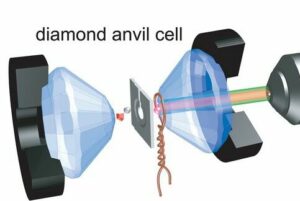Whatever the physical system used (atoms, molecules, spins, optomechanical devices of micro- or nanometric dimensions), quantum sensors work by exploiting the quantum properties of matter and light to achieve very high sensitivity to external force fields. They enable the measurement of a wide range of physical quantities, opening up applications in numerous fields with a high societal impact, such as climate and natural resource monitoring, health, positioning, navigation and dating, or natural disaster prevention. This has led to strong links with industry (Thales, iXblue…). While these sensors are often limited by classical sources of noise, which need to be better controlled, measurement protocols exploiting quantum correlations (between atoms, mechanical modes, electromagnetic field states or even spin states) offer the possibility of pushing their sensitivity below the standard quantum limit, thus achieving performances unattainable with classical technologies.
Current challenges depend on the system under consideration. As atom-based sensors have proven their high sensitivity, a major challenge is to further miniaturize them without degrading their performance. Opto-mechanical sensors, which are miniature and easy to integrate, are becoming more and more mastered in the quantum regime, and are proving increasingly versatile. All-optical sensors using quantum light are promising, while remaining simple to use. Finally, sensors based on artificial atoms have already shown great sensitivity to magnetic field measurements, and are equally promising in the mechanical and inertial fields. For all these sensors, the teams at Île-de-France are today at the cutting edge of the art worldwide.

Figure 4: A colored diamond center, behaving like an artificial atom or qubit, enables the magnetic field in a sample subjected to very high pressure to be measured in situ and with great precision.
Objective
Un premier objectif du DIM est de pousser les performances de ces capteurs au niveau, et au-delà, de la limite quantique standard. Un second objectif est d’améliorer leur niveau d’intégration et leur maturité technologique, pour accompagner des cas d’usage et favoriser leur transfert vers l’industrie.
Team Leaders
Ivan FAVERO
MPQ, Université Paris CitéFranck PEREIRA
SYRTE, Observatoire de Paris
Board
Fabienne GOLDFARB
LUMINMathieu MANCEAU
LPLLaura THEVENARD
INSPCheryl FEUILLET-PALMA
LPEMDimitri LABAT
Chipiron

